|
|
Making digital photos from your magic lantern slides. |
|
As a webmaster I must of course regularly photograph sets of glass magic lantern slides before I can put them on the site. Other collectors will also often need to be able to keep the slides from their collection in a digital form. I rather often get the question how the magic lantern slides can best be photographed. Below are a number of possibilities and tips. |
||
 |
On the table-top. By far the simplest method is of course just to place the lantern slides on the table, preferably with a sheet of white paper underneath, and then take a photo from the hand. The outcome is usually not satisfactory. The picture becomes too dark, the perspective is distorted and the colours are not fresh and bright. Of course, with a program like Photoshop or Paint Shop Pro, the latter is always used by me, there is much that can be improved, but that takes a lot of time and the result usually remains moderate. |
|
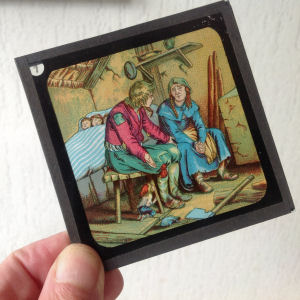 |
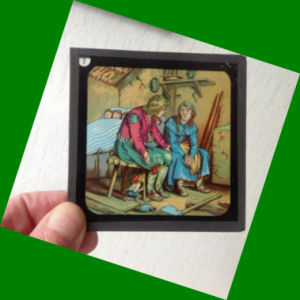 |
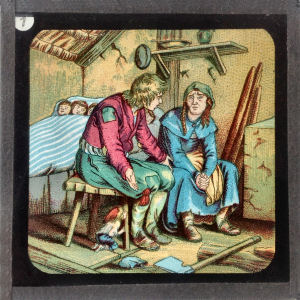 |
| Out of hand. A better method is shooting out of hand because then the slide is lit from behind by the sun or artificial light. Make sure you have a quiet, bright, uniform background. Actually good results can only be achieved when someone is holding the slides and another takes the photographs. Here too a good photo editing program can work wonders, such as placing the picture in the right perspective again. |
||
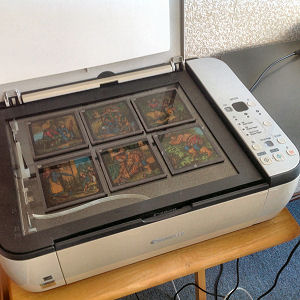 |
Scan. Almost every computer owner has a printer combined with a scanner. It is tempting to go ahead with this appliance because it allows you to easily scan multiple slides at the same time. However, the results are almost always very disappointing. Images become too dark and out of focus. In any case, it must be ensured that the picture on the lantern slide is placed directly on the glass plate of the scanner, so without a protective cover glass as is often the case. Otherwise, the image on the slide plate is a few millimetres above the glass plate and is therefore 'out of focus' and becomes so blurred that it even can no longer be corrected with a photo editing program. |
|
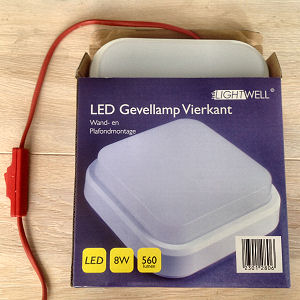 |
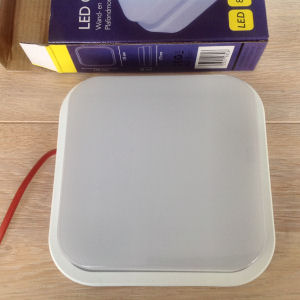 |
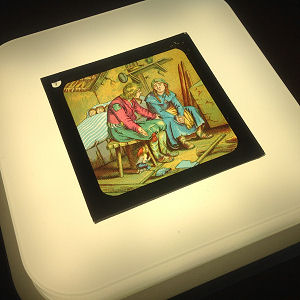 |
| Light box. Strongly resembling the 'on the table-top method' is the use of a (small) light box. This seems simple, but it is not, because the light in the box must be completely even for a good result. A simple light bulb certainly does not meet here. After a lot of experimenting with tl-bars and the like, I found the best solution in a simple ceiling lamp with LED lighting, which is for sale for little money. Because such a lamp is usually attached to the wall or ceiling, I naturally had to attach a cord with a plug to the lamp, but this is not such a difficult procedure. Of course, the surface of such a lamp must be completely smooth and flat and of course also large enough for most lantern slides. The result is a lot better than the ordinary 'on the table-top method', but a number of drawbacks remain. Also, not all photos taken by hand from a series of plates are the same size, so again a lot of work to improve them. |
||
|
Permanent setup. So I was looking for a solution with which I could make photos of sets of lantern slides with a fairly constant quality without much preparation and which also had to be improved only a little, for example because they all already have the same dimensions and the perspective is not disturbed. |
|
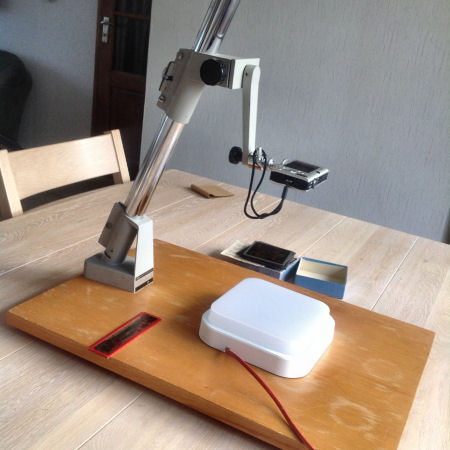 |
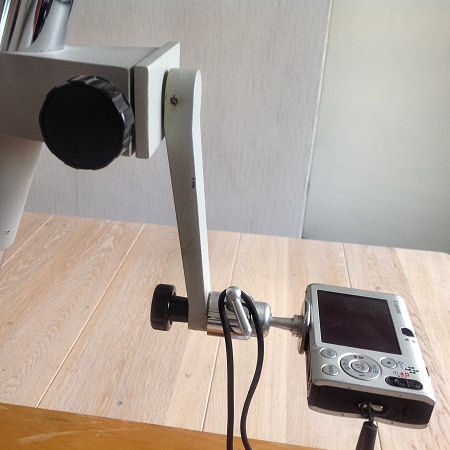 |
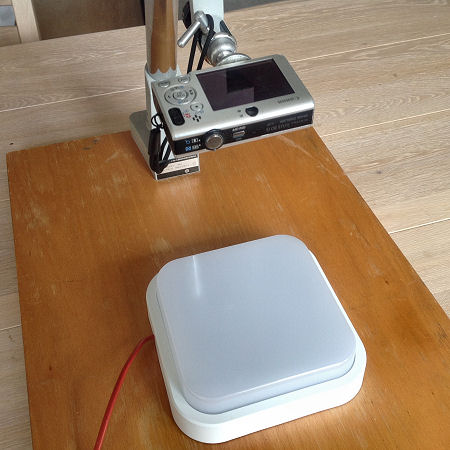 |
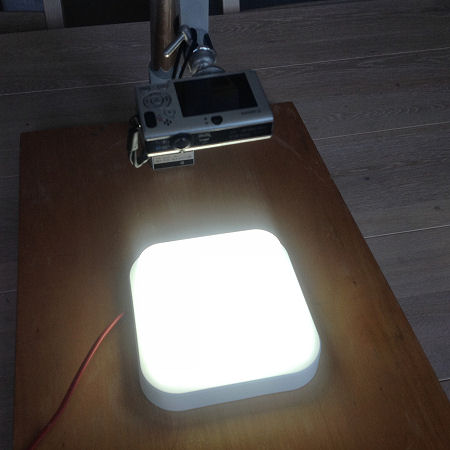 |
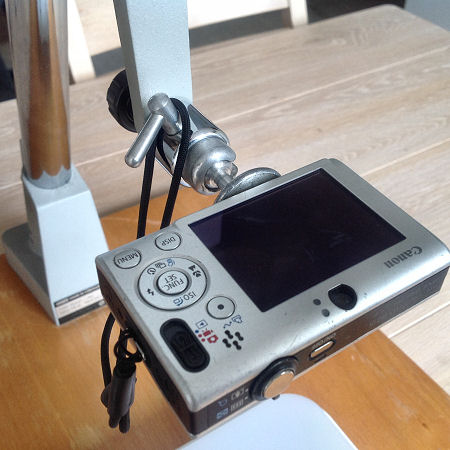 |
 |
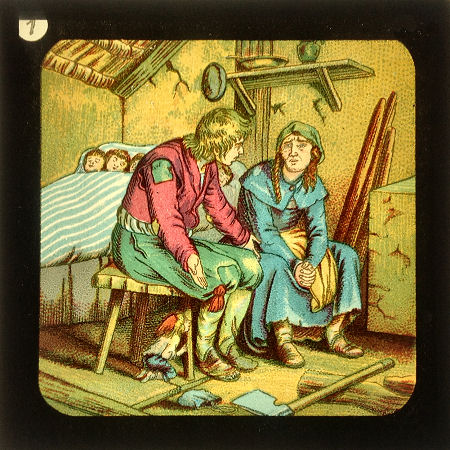 |
I used an old photo enlarger
for this purpose. These devices are inexpensive to find in shops specialized
in recycled goods and in flea markets, because who is still printing his
analogue photo's in a dark room today?! I replaced the enlarger with a digital
camera and placed the light box on the wooden base board. The
height and position of the camera is always easy to set and remains the same
when photographing a series. When a particular camera is used for this purpose, the entire set-up can be left standing (garbage bag against the dust) and you can get started immediately with the next series. Cost: part photo enlarger € 3.00 (flea market) wall / ceiling lamp € 7.00 (supermarket) cord / switch € 0.00 (rubbish bin) canon digital camera € 5.00 (recycle shop) total: € 15.00. |
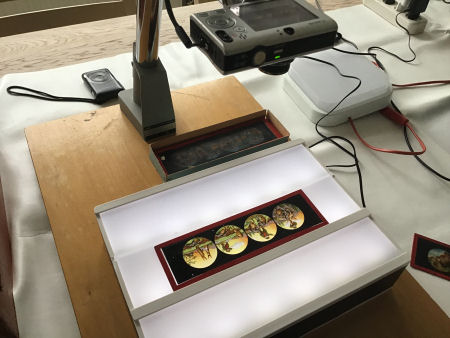 |
 For taking photo's of long magic lantern slides, I purchased a light box for 'modern' slides (give-and-take shop, costs € 0.00). The lighting consists of a set of LED strips, which provide a fairly evenly distributed light. By removing one of the lines, the device was also suitable for the larger slides. |
| See also: The making of 'de Luikerwaal'. | |
| |
©1997-2021 'de Luikerwaal' All rights reserved. Last update: 15-05-2021. |
|